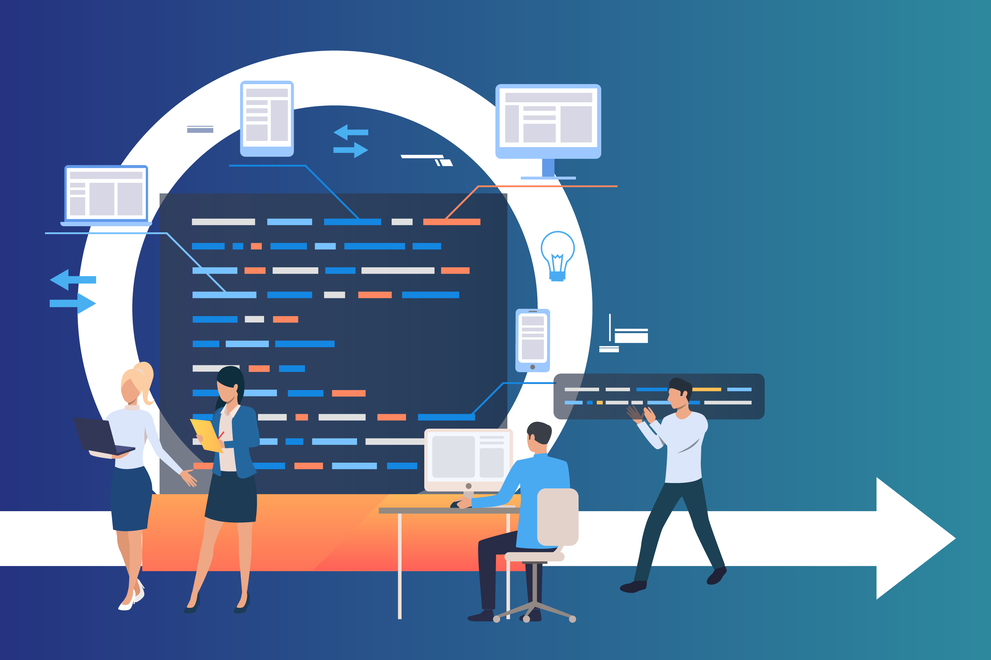Like so many things, the pandemic changed the way organizations operate and manage their workforce. With the vaccine rollout taking longer than usual in most countries, most companies are pushing their return-to-office dates towards the end of this year. According to a survey by the consulting firm McKinsey & Co., companies that assigned office reopening dates last year now hesitate to do so. It has also impacted how companies manage their IT staff.
Managing your IT staff, therefore, has become more crucial than ever. Organizations need a tried-and-tested IT staff augmentation strategy to operate under such circumstances. Under such a plan, you get the advantages of having IT professionals who work for specific requirements. In this blog, we’ll explore the most important benefits of IT staff augmentation.
Business Benefits of IT Staff Augmentation
Staff augmentation enables you to optimize your IT workforce. And you can achieve it by facing the challenges of building a team from scratch. It also helps you reduce overhead costs. With the staff augmentation approach, you don’t have to spend extra money on training, employee benefits, and hiring, among others. Below are the most crucial advantages of adopting IT staff augmentation in your business.
Flexibility and adaptability
When you adopt IT staff augmentation services, workforce management becomes incredibly flexible. You can expand or reduce the size of a team whenever you want. If you are a software or IT services provider, it also helps you diversify services. In times of rapid change like this, such flexibility lets you quickly respond to new market trends. Using staff augmentation, many companies have fulfilled new requirements in the wake of the pandemic. For instance, if your company only provides on-premises software applications, an augmented team could help you deliver cloud-based enterprise solutions.
Better team management
Organizations that efficiently use staff augmentation have better control over how their teams operate. When you fully outsource a software development project, you usually don’t have real-time access to the project. That means the quality and progress of your project are entirely up to the outsourced team working on the project.
But things are starkly different with staff augmentation. You can choose the schedule for the augmentation. Also, having a segmented team means you have lower risks of security threats. That’s also a reason companies with sensitive customer data are likelier to choose augmentation over outsourcing.
Minimal employee attrition
Some organizations experience unusually higher rates of employee attribution. It’s mainly due to the growing demand for talent in the job market. And staff augmentation could prove incredibly useful in dealing with the problem of higher employee turnover. You can use augmentation to avoid stagnation in critical projects. Companies providing enterprise software solutions could particularly benefit from such strategies.
IT staff augmentation vs. managed IT services
Staff augmentation is enhancing your existing IT team by adding professionals like developers and designers. Some organizations even add a separate tech team to their current workforce. Staff augmented is usually driven by the need to address short-term IT needs. Budget restraints also play a crucial role in fueling IT staff augmentation.
Managed IT services, on the other hand, means you don’t have to do anything to take care of the services. The vendor providing you with the managed IT solutions will address every need associated with the areas for which you chose them. Managed IT services have different pricing structures based on your requirements. This approach is usually costlier than staff augmentation. Mid-sized and large enterprises choose managed IT services for areas like enterprise cloud solutions.
Some organizations choose another approach, called nearshore outsourcing. It’s different from the more widely known offshore IT outsourcing services. As the term suggests, nearshore outsourcing usually involves vendors in a comparatively nearby country or IT market.
Wrapping up
Staff augmentation is gaining increased prominence in this time of rapid change. The pandemic-induced wave of digital transformation has forced most businesses to rapidly adopt the technology. The pace at what markets and consumer behavior evolved has overwhelmed many businesses. It also prompted increased adoption of otherwise unlikely ideas like staff augmentation. Medium enterprises and large companies alike today are more open to augmentation and outsourcing.
At OrangeMantra, a globally trusted digital transformation solutions provider, we have helped numerous clients respond swiftly to the pandemic. Over the past 11 months, we have worked closely with small businesses and multinational brands alike to address the pandemic-altered needs of the market. You could choose us for implementing staff augmentation or building a custom software solution. Follow our blogs and social media posts for all things tech.
FAQs
Q. What is the difference between staff augmentation and managed services?
The most significant difference between staff augmentation and managed services is that under a managed services model, the provider is committed to addressing all the tech needs of the clients. Under the staff augmentation model, the only service commitment is hours of work.
Q. What is a managed service?
Managed services model is a type of outsourcing. It covers all the tech requirements for a specific area of the client’s business. In this model, the vendor takes over all the technology decisions.
Q. What is meant by digital transformation?
Digital transformation is the process of using digital technologies to create or modify a tech-based business infrastructure. Digital solutions enable companies to enhance the work culture, and customer experiences, and implement remote working, among other things.
Q. What is a cloud-based solution?
Cloud-based solutions on-demand services, computer networks, storage, enterprise applications, or resources accessed via the internet. The services are delivered through the provider’s shared cloud computing infrastructure.
Q. What is cloud service development?
Cloud application development services assist in the development, migration, or maintenance of cloud-based solutions. The services ensure that clients’ software applications and infrastructure always run smoothly.
